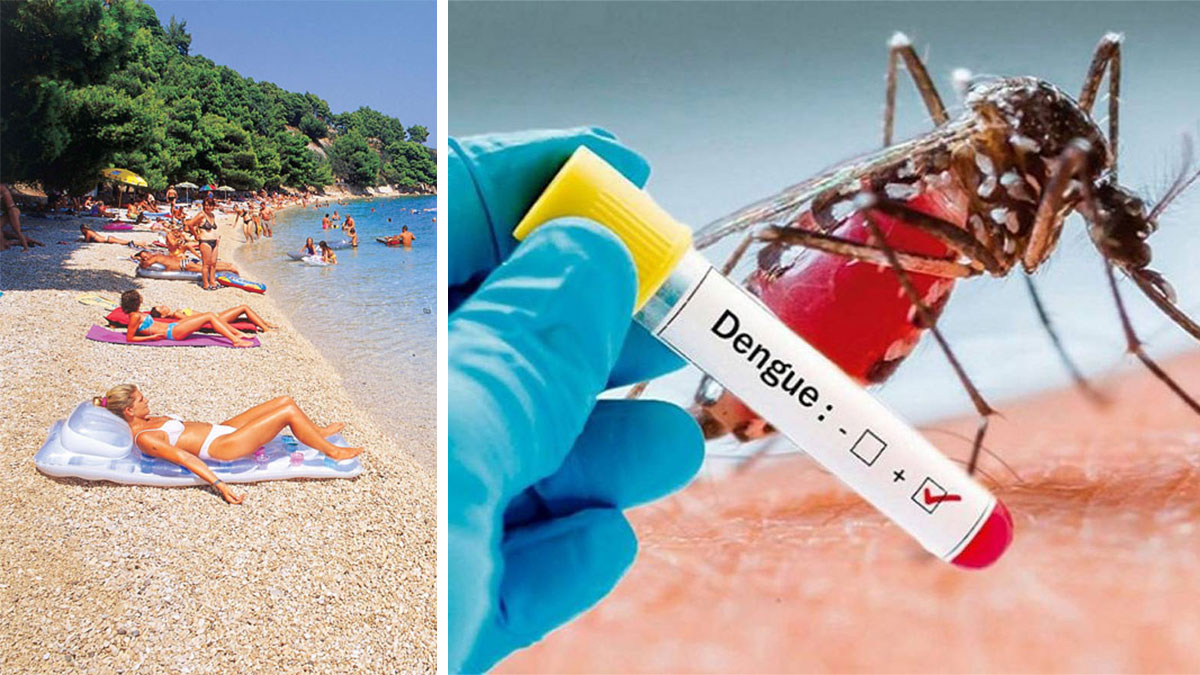Popular European resorts are facing a new threat: an outbreak of dengue known as bone fever, which has killed five people. Now tourists traveling to the countries of the Old World have been warned about the risk of contracting this dangerous virus, and doctors have reminded of 14 key symptoms of the disease that every traveler should know.
Deadly threat on the coast
According to a report from the European Center for Disease Control (EDCD), six cases of dengue infection have been reported in the northern and central regions of Italy, five of which were fatal. There were incidents in Lombardy and one in Lazio. Since early September, the number of dengue cases has increased sharply since the previous warning of four cases on August 25, all of which were acquired locally and not during travel abroad, the department noted. So, on August 18, the Italian Ministry of Health reported the first case, while the infected person had not even traveled outside his region. His first symptoms appeared on August 3. Then others began to emerge. The authorities sounded the alarm about mass cases on August 21 and are trying to control the spread of the virus.
However, the European Center for Disease Control said it is not unusual for dengue cases to occur during the summer months in parts of southern Europe, particularly in regions where the Aedes albopictus mosquito is present. In the summer it has long been like in the tropics – hot and humid, and these mosquitoes love this weather.
Virus at other European resorts
In addition to Italy, the dengue virus was also reported in France earlier in August. In particular, an operation was launched in Paris to destroy dangerous blood-sucking creatures that transmit this disease. Dengue virus, which is native to regions such as Africa, Asia, Central and South America, and the Caribbean, has recently become part of several European countries, including Croatia, France, Italy, Spain, and Portugal.
How to protect yourself from dengue?
To avoid dengue infection, it is recommended to minimize the risk of mosquito bites. However, if the insect has managed to do its job, then you need to focus on the symptoms. At an early stage of the disease, measures can be taken:
Symptoms can range from mild to severe and include the following:
- Heat. Usually begins suddenly and can reach high levels.
- Headache.
- Pain in the eyes. There may be pain in the back of the eyes.
- Pain in joints and muscles. This is often severe pain that can cause discomfort when moving.
- Fatigue.
- Malaise.
- Swollen glands.
- Rash. The most common manifestation is a skin rash, which may be red and itchy and may cover a large area of the body.
- Bleeding. In some cases, dengue can cause minor bleeding in the gums, nose, or other areas.
- Thrombocytopenia. This is a decrease in the number of platelets in the blood, which can lead to an increased tendency to bleed.
- Severe abdominal pain.
- Rapid breathing.
- Restlessness and inability to relax.
- Blood in vomit or stool.
It is important to note that dengue can have different forms, including classical and hemorrhagic. The hemorrhagic form is more severe and can be fatal. If you or someone you love suspects dengue, it is important to see a doctor for diagnosis and treatment. Dengue is a serious disease, and if left uncontrolled it can cause complications.

